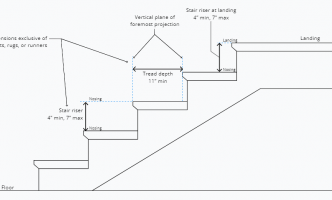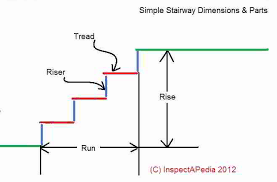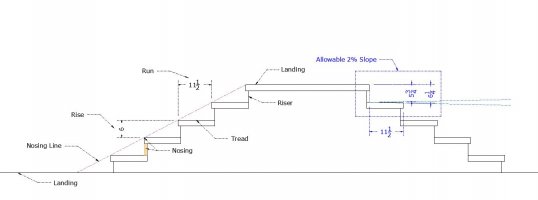The following is from Ontario Building Code, Division B, Part 3:
--------------------------------------------------------------------------------------------------------------
3.3.2.4. Aisles
...
(23) Steps in an aisle shall,
(a) have a run not less than 230 mm exclusive of nosings,
(b) have a tread depth not less than 250 mm,
(c) extend to the adjacent rows of seats in a manner that will not create a hazard from tripping, and
(d) have a finish on the treads conforming to Sentence 3.4.6.1.(1)
...
-------------------------------------------------------------------------------------------------------------
Is "run" the same thing as "tread" in clause (b) above? If yes, why are they specified in separate clause?
--------------------------------------------------------------------------------------------------------------
3.3.2.4. Aisles
...
(23) Steps in an aisle shall,
(a) have a run not less than 230 mm exclusive of nosings,
(b) have a tread depth not less than 250 mm,
(c) extend to the adjacent rows of seats in a manner that will not create a hazard from tripping, and
(d) have a finish on the treads conforming to Sentence 3.4.6.1.(1)
...
-------------------------------------------------------------------------------------------------------------
Is "run" the same thing as "tread" in clause (b) above? If yes, why are they specified in separate clause?



